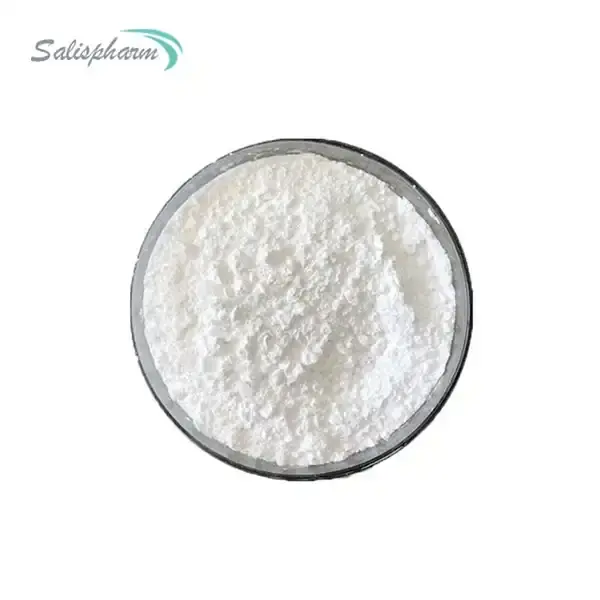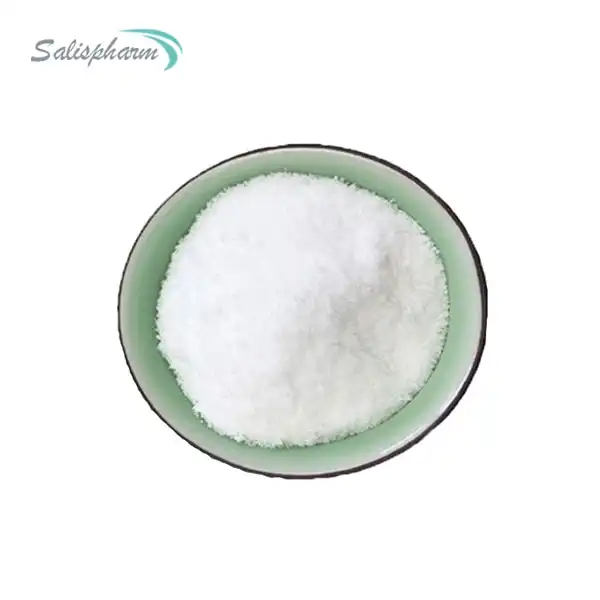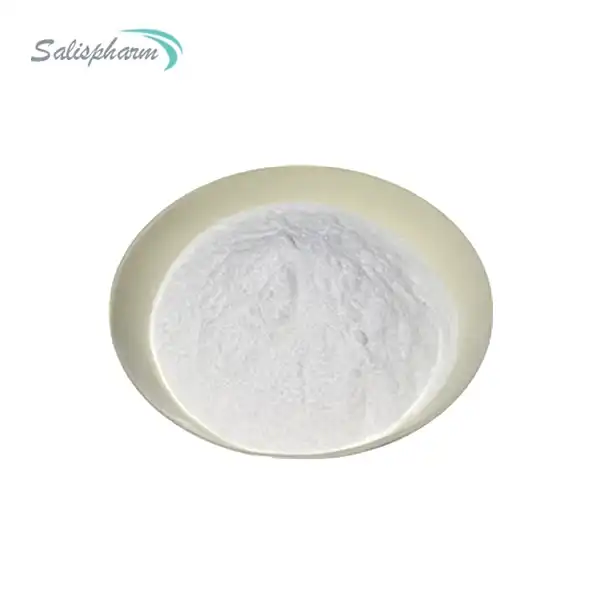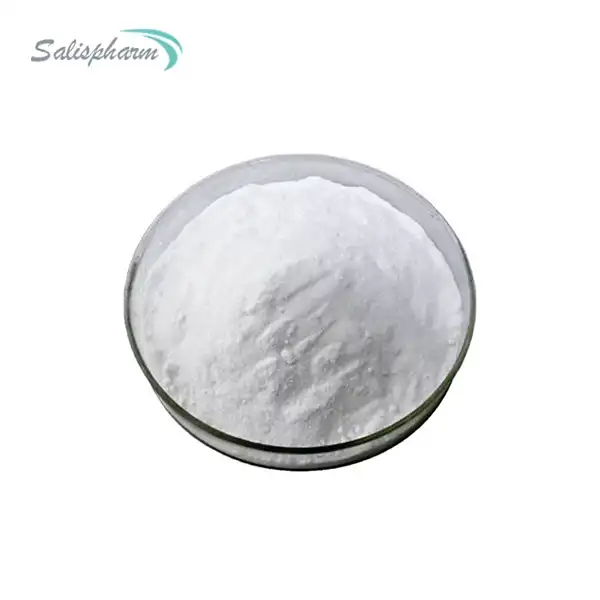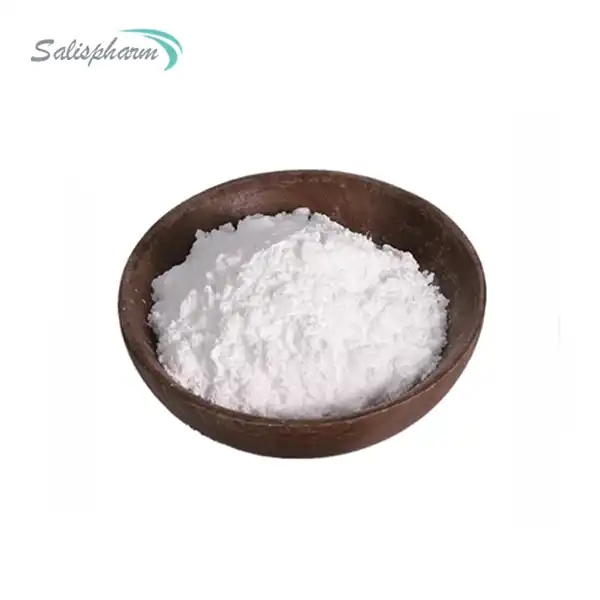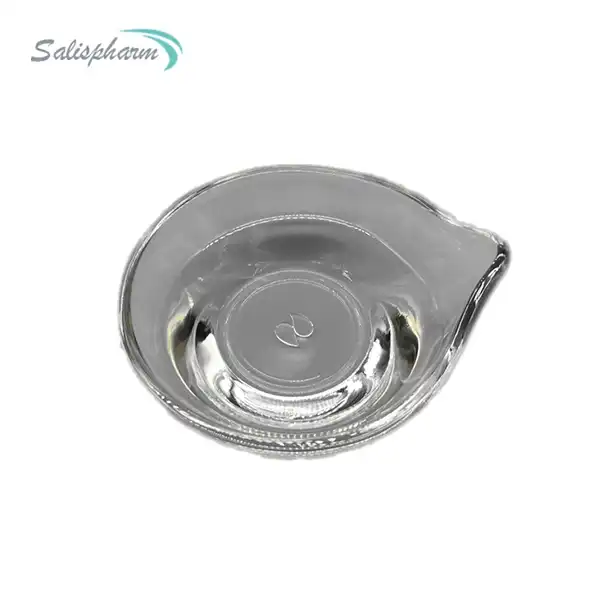Ketoconazole powder is a powerful antifungal medication used to treat various fungal infections affecting the skin and scalp. This versatile treatment comes in a powdered form, allowing for easy application and absorption. Whether you're dealing with dandruff, seborrheic dermatitis, or other fungal skin conditions, understanding how to use ketoconazole powder effectively can help you achieve the best results. In this comprehensive guide, we'll explore the proper usage, benefits, and application techniques of ketoconazole powder to help you manage fungal infections with confidence.
What is ketoconazole powder used for?
Ketoconazole powder is a versatile antifungal medication that serves multiple purposes in treating various fungal infections. Its primary use is to combat fungal growth on the skin and scalp, making it an effective solution for a range of conditions.
One of the most common applications of ketoconazole powder is in the treatment of dandruff and seborrheic dermatitis. These conditions are often caused by an overgrowth of the yeast Malassezia, which thrives in the oily areas of the scalp and skin. Ketoconazole works by inhibiting the growth of this yeast, reducing inflammation, and alleviating symptoms such as itching, flaking, and redness.
In addition to scalp conditions, ketoconazole powder is also used to treat other fungal skin infections. These may include tinea versicolor, a common condition characterized by discolored patches on the skin, as well as ringworm, jock itch, and athlete's foot. The powder form of ketoconazole is particularly beneficial for these conditions as it helps absorb excess moisture, creating an environment less conducive to fungal growth.
Furthermore, ketoconazole powder has shown efficacy in treating pityriasis versicolor, a condition causing light or dark patches on the skin due to an overgrowth of yeast. The powder's ability to penetrate the affected areas and combat the underlying fungal infection makes it a valuable treatment option for this condition.
For individuals prone to recurrent fungal infections, ketoconazole powder can be used as a preventive measure. Regular application in areas susceptible to fungal growth, such as skin folds or areas that tend to remain moist, can help maintain a fungus-free environment and prevent the recurrence of infections.
It's worth noting that ketoconazole powder is not limited to human use. In veterinary medicine, it's often employed to treat fungal skin infections in pets, particularly dogs and cats. This versatility demonstrates the broad-spectrum antifungal properties of ketoconazole.
While ketoconazole powder is primarily known for its antifungal properties, some studies have suggested potential benefits in treating certain types of hair loss, particularly androgenetic alopecia. The powder's anti-inflammatory properties and its ability to reduce sebum production may contribute to creating a healthier scalp environment conducive to hair growth.
How do you apply ketoconazole powder to the skin?
Applying ketoconazole powder to the skin effectively is crucial for achieving optimal results in treating fungal infections. The process is relatively straightforward, but attention to detail can significantly enhance the treatment's efficacy. Here's a comprehensive guide on how to apply ketoconazole powder to the skin properly.
First and foremost, it's essential to start with clean, dry skin. Before applying the powder, gently wash the affected area with mild soap and warm water. Pat the skin dry thoroughly with a clean towel, as excess moisture can interfere with the powder's ability to adhere to the skin and may even exacerbate the fungal infection.
Once the skin is clean and dry, it's time to prepare the ketoconazole powder for application. If you're using a shaker bottle, gently tap or shake it to loosen the powder. If your ketoconazole powder comes in a different container, you might need to use a clean applicator or your hand to dispense the powder.
When applying the powder, it's crucial to cover the entire affected area evenly. Start by sprinkling a thin layer of powder over the infected skin. You don't need to apply a thick layer; a light dusting is usually sufficient. If you're treating a large area or a skin fold, you may find it helpful to use a soft, clean makeup brush or cotton swab to distribute the powder evenly.
For hard-to-reach areas or precise application, you can pour a small amount of powder into the palm of your hand and use your fingertips to apply it to the affected skin. This method allows for more controlled application and ensures that you're targeting the right areas.
If you're applying ketoconazole powder to skin folds or areas that tend to remain moist, such as under the breasts or in the groin area, pay extra attention to these regions. These areas are particularly prone to fungal growth due to the warm, moist environment. Apply a slightly thicker layer of powder in these areas to help absorb excess moisture and create a less hospitable environment for fungi.
After applying the powder, gently massage it into the skin using circular motions. This helps ensure that the powder is evenly distributed and adheres well to the skin. Be careful not to rub too vigorously, especially if the skin is irritated or inflamed.
For best results, it's generally recommended to apply ketoconazole powder once or twice daily, or as directed by your healthcare provider. Consistency is key in treating fungal infections, so try to apply the powder at the same time each day to establish a routine.
If you're using ketoconazole powder on your scalp, the application process might be slightly different. You may need to part your hair in sections to ensure the powder reaches the scalp directly. A nozzle applicator can be particularly helpful for targeted scalp application.
It's important to note that while ketoconazole powder is effective at absorbing moisture, you should avoid applying it to excessively wet or sweaty skin. If you've just finished exercising or bathing, wait until your skin is completely dry before applying the powder.
When treating fungal infections on the feet, such as athlete's foot, consider applying the powder not only to the affected skin but also inside your shoes and socks. This can help prevent reinfection and control moisture in your footwear.
After applying ketoconazole powder, allow it to sit on the skin for some time before getting dressed. This gives the powder time to work and helps prevent it from being immediately rubbed off by clothing. If possible, wear loose-fitting, breathable clothing over the treated areas to promote air circulation.
Remember that while applying ketoconazole powder, it's essential to avoid inhaling the powder or getting it in your eyes, nose, or mouth. If accidental contact occurs, rinse thoroughly with water.
How long does it take for ketoconazole powder to work?
The time it takes for ketoconazole powder to work can vary depending on several factors, including the severity of the fungal infection, the specific condition being treated, and how consistently the treatment is applied. Understanding the typical timeline for improvement can help manage expectations and ensure adherence to the treatment regimen.
For most superficial fungal skin infections, such as athlete's foot or ringworm, patients often start to notice improvements within a few days to a week of starting treatment with ketoconazole powder. These initial improvements may include reduced itching, less redness, and a decrease in the scaling or flaking of the skin. However, it's important to note that these early signs of improvement don't mean the infection is fully cleared.
In cases of more persistent or severe fungal infections, it may take two to four weeks of consistent treatment before significant improvements are observed. For conditions like seborrheic dermatitis or chronic dandruff, which ketoconazole powder is often used to treat, patients might need to use the powder for several weeks before seeing substantial results.
When treating scalp conditions, such as seborrheic dermatitis of the scalp, the timeline for improvement can be slightly longer. This is because the powder needs to penetrate through the hair to reach the scalp effectively. In these cases, patients might need to use ketoconazole powder for four to eight weeks before experiencing significant relief from symptoms like itching, flaking, and redness.
It's crucial to understand that while symptoms may improve relatively quickly, the underlying fungal infection often takes longer to completely resolve. This is why healthcare providers typically recommend continuing treatment for a period of time after symptoms have subsided. This extended treatment helps ensure that all fungal organisms are eradicated, reducing the risk of recurrence.
For some chronic conditions, such as recurring athlete's foot or persistent dandruff, long-term or maintenance therapy with ketoconazole powder might be necessary. In these cases, patients may need to use the powder regularly, often once or twice a week, to prevent the recurrence of symptoms.
The efficacy of ketoconazole powder can also be influenced by environmental factors and personal habits. For instance, keeping the affected area clean and dry can accelerate the healing process. Similarly, avoiding tight-fitting clothes or shoes that trap moisture can create a less favorable environment for fungal growth, potentially speeding up the treatment process.
It's worth noting that individual responses to ketoconazole powder can vary. Some people may experience rapid improvement, while others might require a longer treatment period to see significant results. Factors such as the individual's immune system, the specific strain of fungus causing the infection, and concurrent health conditions can all influence how quickly ketoconazole powder works.
If you're using ketoconazole powder and don't notice any improvement after two weeks of consistent use, it's advisable to consult with a healthcare provider. They may need to reassess the diagnosis or consider alternative treatment options.
In conclusion, while ketoconazole powder often begins to show effects within a week for mild infections, it typically takes several weeks of consistent use to fully resolve a fungal infection. Patience and adherence to the treatment regimen are key to achieving the best results. Always follow the guidance of your healthcare provider and don't hesitate to seek further advice if you have concerns about the progress of your treatment.
If you are also interested in this product and want to know more product details, or want to know about other related products, please feel free to contact iceyqiang@aliyun.com.
References
1. Gupta, A. K., & Foley, K. A. (2015). Antifungal Treatment for Pityriasis Versicolor. Journal of Fungi, 1(1), 13-29.
2. Faergemann, J. (2000). Management of seborrheic dermatitis and pityriasis versicolor. American Journal of Clinical Dermatology, 1(2), 75-80.
3. Barak-Shinar, D., Del Río, R., & Green, L. J. (2017). Treatment of Seborrheic Dermatitis Using a Novel Herbal-based Cream. The Journal of Clinical and Aesthetic Dermatology, 10(4), 17-23.
4. Elewski, B. E., & Cantrell, W. (2011). An Evidence-Based Review of the Efficacy of Topical Antifungal Treatments for Onychomycosis. Journal of Drugs in Dermatology, 10(10), 1138-1144.
5. Rotta, I., Sanchez, A., Gonçalves, P. R., Otuki, M. F., & Correr, C. J. (2012). Efficacy and safety of topical antifungals in the treatment of dermatomycosis: a systematic review. British Journal of Dermatology, 166(5), 927-933.
6. Gupta, A. K., & Versteeg, S. G. (2017). Topical Treatment of Facial Seborrheic Dermatitis: A Systematic Review. American Journal of Clinical Dermatology, 18(2), 193-213.
7. Czernielewski, J., & Veraldi, S. (2013). Efficacy and tolerability of 2% ketoconazole cream in the treatment of seborrheic dermatitis: a systematic review of randomized controlled trials. Expert Opinion on Pharmacotherapy, 14(16), 2245-2252.
8. Sterry, W., Paus, R., & Burgdorf, W. (2006). Thieme Clinical Companions: Dermatology. Thieme Medical Publishers.
9. Draelos, Z. D. (2013). Cosmetic Dermatology: Products and Procedures. John Wiley & Sons.
10. Elewski, B. E., Hughey, L. C., Sobera, J. O., & Hay, R. (2018). Fungal Diseases. In Dermatology (4th ed., pp. 2181-2206). Elsevier.




